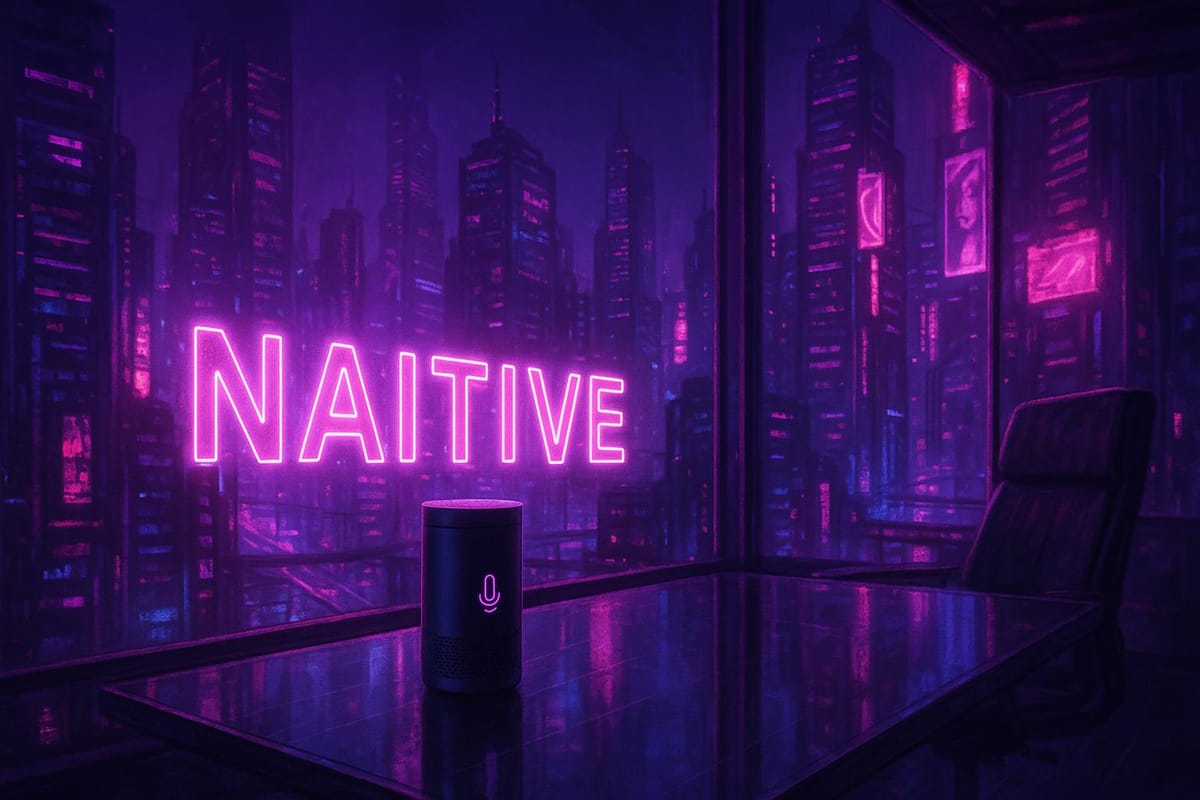Omnichannel Voice AI: Case Studies and ROI
Explore how Omnichannel Voice AI enhances customer service, reduces costs, and drives revenue growth through real-world case studies and ROI insights.

Omnichannel Voice AI is transforming how businesses handle customer service by integrating voice systems across platforms like phone, chat, and email. This technology ensures smooth transitions between channels, reduces costs, and improves customer satisfaction. Companies using these systems report:
- Cost Savings: Reductions of 25–45% in labor and operational expenses.
- Revenue Growth: Up to 62% increase in client acquisitions and 20% higher average order values.
- Efficiency: AI systems manage up to 95% of interactions and cut wait times by 40%.
- Quick ROI: Most businesses break even in 60–90 days, with long-term ROI reaching 331%.
Case studies from industries like healthcare, retail, and financial services highlight these benefits. For example, AI reduced patient wait times by 47% in healthcare and boosted upsell conversions by 35% in hospitality. Businesses can start small with tasks like lead qualification or after-hours inquiries and expand as they see results. Integration with tools like Salesforce ensures personalized service, while expert consultants like NAITIVE can simplify implementation. With measurable results, Omnichannel Voice AI is a proven solution for improving service and driving growth.
The Rise of Voice AI Agents: Real World Deployments Across the Enterprise
Business Reasons for Adopting Omnichannel Voice AI
In the U.S., businesses are turning to omnichannel voice AI to improve customer experiences, reduce operational costs, and drive revenue growth. These advantages set the stage for understanding the return on investment (ROI) and the case studies discussed later.
Better Customer Experience and Retention
Modern consumers expect fast, personalized service across every channel. Omnichannel voice AI meets these expectations by delivering consistent and accurate information at every touchpoint, all while maintaining context when customers switch between channels.
This technology has proven its worth, with AI-powered voice systems boosting customer satisfaction scores by up to 25% and improving first-call resolution rates by 15–25% [3]. These results come from the system's ability to handle complex inquiries intelligently and provide tailored responses based on customer data and preferences.
"The AI Agent NAITIVE designed now manages 77% of our L1-L2 client support. NAITIVE's AI Agent service is an absolute game-changer for our customer service, absolutely amazing!" – Sarah Johnson, CXO
Retention rates also see a significant lift. One CEO reported a 34% increase in customer retention while managing 200 AI-driven outbound calls daily. Additionally, the 24/7 availability of AI voice systems ensures that no customer query goes unanswered. This round-the-clock support is especially beneficial for businesses serving global markets or handling urgent requests outside regular business hours. Higher satisfaction levels not only improve retention but also unlock revenue growth opportunities.
Operational Efficiency and Cost Savings
Omnichannel voice AI doesn't just enhance customer service - it also delivers operational efficiencies that lead to substantial cost savings. These systems can handle multiple calls at once, cutting wait times by up to 40% [3], while reducing labor expenses by 25–45% [3] by eliminating the need for surge staffing and expensive IVR hardware.
For example, a mid-sized law firm reduced its administrative staff requirements by 37.5% after deploying AI voice agents [3]. The scalability of AI also allows businesses to quickly adjust capacity during peak times without the hassle of hiring temporary staff. These efficiencies lower costs and free up resources for other innovations, directly contributing to a stronger ROI.
Revenue Growth Opportunities
Beyond cost savings, AI voice agents open up new revenue streams through proactive sales strategies like intelligent upselling and personalized offers. They can qualify leads, recover abandoned shopping carts, and conduct outreach that human agents might not consistently perform.
One company saw a 41% jump in customer conversions alongside improved retention rates. In the hospitality industry, hotels and casinos reported a 35% boost in upsell conversions and a 20% increase in ancillary revenue per guest. These gains are driven by AI's ability to analyze customer data in real time and deliver tailored offers at just the right moment.
AI systems also capture after-hours inquiries, which can significantly impact revenue. For instance, a law firm increased new client acquisitions by 62% and went from capturing 0% to 100% of after-hours inquiries. This change recovered over $20,000 in lost revenue within the first month [3].
Case Studies: Omnichannel Voice AI Success Stories
Real-world examples from various U.S. industries showcase how omnichannel voice AI delivers measurable improvements in efficiency and cost savings. Here’s a closer look at its impact on healthcare, retail, and financial services.
Healthcare: Cutting Patient Wait Times with AI Voice Agents
The Medicare Club, a healthcare startup, faced overwhelming call volumes during enrollment periods, leading to long patient wait times and overworked human agents. In 2024, they introduced VoiceAIWrapper's AI voice agents to handle outbound lead qualification and appointment scheduling [3]. By automating patient screenings, streamlining call routing, and offering 24/7 scheduling, the system allowed human staff to focus on more complex tasks. The results? A 47% jump in customer appointments, shorter wait times for patients, and lower staffing costs by reducing the need for temporary workers during busy periods [3]. This example underscores how voice AI can enhance efficiency and deliver real savings in healthcare.
Retail: Tackling Seasonal Customer Support Challenges
Retailers often struggle with surging customer demands during peak seasons, but AI voice agents provide a scalable solution. These systems managed multiple calls simultaneously, reducing wait times by 40% and cutting the need for seasonal staff by 25–45%. On top of that, intelligent upselling features increased average order value by 20%, while first-call resolution rates improved by 15–25% [3]. The combination of faster service, better sales outcomes, and fewer staffing challenges highlights how voice AI can transform retail operations during high-demand periods.
Financial Services: Simplifying Loan Applications with Voice AI
Atos, a global digital transformation provider, used PolyAI’s voice assistant to overhaul the loan application process for a government-backed financial service in 2025. Previously, the manual process frustrated customers and hurt retention rates. The AI system automated initial screenings, qualification calls, and follow-ups, all while syncing seamlessly with existing CRM platforms. This reduced agent call volumes by 30%, allowing staff to focus on more complex cases. Remarkably, the AI handled a workload equivalent to 50–95 full-time agents at just 50% of the cost. With faster processing and round-the-clock availability, customer satisfaction soared thanks to timely, personalized service.
These case studies clearly show how omnichannel voice AI can cut costs, streamline operations, and boost revenue across industries like healthcare, retail, and financial services.
ROI Analysis: Measuring Voice AI Value
Building on the earlier discussion about its benefits, this section dives into how businesses can measure the financial impact of voice AI. For U.S. companies, understanding and quantifying ROI is essential to demonstrating value and securing continued investment in AI technologies.
Key ROI Metrics for US Enterprises
When evaluating the success of voice AI, businesses often focus on three primary metrics: cost savings, revenue growth, and operational efficiency improvements. Among these, the payback period is a critical indicator, with most companies breaking even within 60 to 90 days of implementation.
Labor cost savings stand out as a major advantage. On average, businesses report savings of 25% to 45% in operational costs. Take the example of a mid-sized law firm: after adopting voice AI, they reduced administrative staff needs by 37.5%, cut consultation no-shows by 67%, and improved after-hours inquiry capture from 0% to 100%. These kinds of results provide a solid foundation for calculating ROI.
"Can't recommend NAITIVE enough, 200 AI Agent based outbound calls per day, customer retention up 34%, customer conversion up 41%! I still can't believe it!" - John, CEO
ROI Calculation Methods
To calculate ROI for voice AI, businesses often start by analyzing historical call volumes and determining the current cost per call, which typically falls between $5 and $15. This figure includes agent salaries, benefits, and overhead. By applying an automation rate - usually 40% to 60% - businesses can estimate the number of calls handled by AI and calculate direct labor savings.
Operational improvements also factor into ROI. For instance, voice AI eliminates the need for surge staffing during peak times and captures revenue from after-hours inquiries. Revenue gains can include increased conversion rates, upselling opportunities, and higher average order values - often rising by about 20%. Voice AI systems are also capable of handling up to 200 outbound calls per day, significantly boosting lead generation efforts.
To determine overall ROI, companies compare total savings and revenue gains against implementation costs, which include software licensing, integration, and training. This calculation helps establish net returns and the payback period.
Typical ROI Ranges and Break-Even Timelines
Industry benchmarks provide a clear picture of what businesses can expect from voice AI investments. Many implementations report ROI as high as 331% over three years, with operational cost reductions ranging from 25% to 45%. Most companies achieve break-even within 60 to 90 days, and some see payback in under six months, making voice AI a compelling choice for automation.
| Metric | Typical Range | Timeframe |
|---|---|---|
| Payback Period | 60–90 days | Initial implementation |
| Operational Cost Reduction | 25–45% | Within 6 months |
| Customer Satisfaction Improvement | Up to 25% | 3–6 months |
| Long-term ROI | Up to 331% | 3 years |
The benefits extend beyond immediate cost savings. Companies report lasting improvements, such as a 30% boost in customer engagement, better lead qualification, and lower employee turnover thanks to automating repetitive tasks. Voice AI also ensures 24/7 availability, enabling businesses to capture revenue from customers in different time zones or those who prefer after-hours communication.
Revenue-driven implementations often yield impressive results. For example, in the hospitality sector, businesses have seen a 35% increase in upsell conversion rates and a 20% rise in ancillary revenue per guest. These revenue gains frequently surpass initial cost savings within the first year.
To maximize ROI, proper integration with existing systems is key. Synchronizing voice AI data with CRM platforms can enhance lead quality, reduce administrative tasks, and improve performance tracking. This integration often makes the difference between achieving good ROI and unlocking exceptional returns on voice AI investments.
Best Practices for Implementing Omnichannel Voice AI
To get the most out of your voice AI investment, it’s important to follow a few key practices. By carefully planning workflows, integrating systems efficiently, and teaming up with experienced partners, you can ensure a smooth implementation that delivers real results.
Assessing Communication Workflows and AI Integration Points
Start by mapping out your current customer communication channels. Pinpoint areas where resources are stretched thin or where bottlenecks occur. Tasks like scheduling appointments, checking order statuses, or handling basic customer inquiries are often high-volume and can benefit significantly from automation. Analyze call volumes and handling times to identify these opportunities.
Focus on areas where voice AI can make the biggest difference - like tier-1 customer support, lead qualification, appointment scheduling, and after-hours inquiries. For example, in retail, using voice AI to manage order status updates or follow up on abandoned carts has been shown to boost conversion rates while lightening the load on staff.
CRM and Business System Integration
Integrating voice AI with your CRM and other business systems is essential for personalized interactions and maintaining accurate customer records.
To make this work, ensure that your voice AI system updates data in real time and connects seamlessly with platforms like Salesforce or HubSpot. This allows the AI to leverage historical data to provide more meaningful responses. Security is another critical factor - voice AI systems must comply with data privacy regulations, encrypt data during transmission, and include access controls and audit trails to protect customer information. A smooth flow of information between systems ensures the AI can access the insights it needs to respond effectively.
Partnering with Expert AI Consulting Providers
Working with an experienced AI consulting provider can help you avoid common challenges and speed up the implementation process.
Take NAITIVE AI Consulting Agency as an example. They specialize in analyzing business operations to uncover opportunities for voice AI and developing strategies tailored to specific goals. Beyond the initial setup, they assist with workflow assessments, integration planning, and change management to ensure that voice AI solutions align seamlessly with your existing processes.
When choosing a consulting partner, look for those with a proven track record in implementing autonomous voice agents and experience in similar projects. A good partner will guide you from proof-of-concept to full deployment and provide ongoing support. They should also offer training and clear documentation so your internal team can confidently manage and optimize the system over time. Following these steps can help replicate the operational improvements and enhanced customer experiences seen in successful implementations elsewhere.
Conclusion: Business Transformation with Omnichannel Voice AI
Omnichannel voice AI is reshaping how businesses operate, delivering results across industries. Whether it’s a healthcare provider cutting down patient wait times or a retailer managing the chaos of peak seasons, the impact goes well beyond basic automation.
Key Benefits Summary
Omnichannel voice AI brings measurable improvements to businesses by focusing on three main areas:
- Customer satisfaction: Boosts by up to 25%, thanks to 24/7 availability and shorter wait times.
- Operational efficiency: Increases of 25-45%, with AI voice agents taking on workloads equal to 50-95 full-time staff - at half the cost.
- Revenue growth: Higher conversion rates (up by 35%), better average order values, and the ability to capture after-hours sales opportunities.
The financial upside is hard to ignore. Some companies have reported a return on investment (ROI) as high as 331% within three years, with most reaching the break-even point in just 60-90 days. With these results in mind, the next steps for implementing AI solutions become clear.
"The Voice AI Agent Solution NAITIVE implemented is from the future. Can't recommend NAITIVE enough, 200 AI Agent based outbound calls per day, customer retention up 34%, customer conversion up 41%! I still can't believe it!"
- John, CEO
Next Steps
With proven ROI and operational benefits, the path forward starts with focused pilot projects. Begin by reviewing your current communication workflows to pinpoint areas where AI can make the biggest difference. Common starting points include tier-1 support, lead qualification, appointment scheduling, and after-hours inquiries - tasks that often deliver quick wins and strong returns.
Seamless integration with your existing CRM and business tools is essential. Your voice AI solution should work effortlessly with platforms like Salesforce or HubSpot, ensuring real-time updates and personalized customer experiences.
Partnering with skilled AI consultants can make all the difference. NAITIVE AI Consulting Agency, for example, specializes in creating and managing advanced AI systems, like autonomous voice agents, to ensure your implementation delivers measurable outcomes.
Most implementations can be up and running within weeks, allowing you to see results quickly. Start small with high-impact pilot projects to showcase value, then expand across your organization based on the metrics that matter most.
Customers today expect seamless, efficient service across every channel. Omnichannel voice AI not only meets these expectations but surpasses them, driving efficiency, boosting revenue, and giving your business a competitive edge.
FAQs
What are the best ways to measure the ROI of Omnichannel Voice AI, and which metrics should businesses focus on?
Measuring the return on investment (ROI) for Omnichannel Voice AI means focusing on key metrics that reveal its influence on your business. It’s about understanding how this technology impacts cost efficiency and revenue growth through better customer engagement and satisfaction.
Here are some essential metrics to watch:
- Customer satisfaction scores (CSAT): These scores provide insight into how much the user experience improves with AI-driven interactions.
- Call deflection rates: This metric tracks how effectively the AI handles customer inquiries without needing human support, reducing workload for your team.
- Operational cost reductions: Think about savings from lower staffing requirements or quicker call resolutions.
- Revenue metrics: Personalized interactions can lead to higher sales conversions, making this a crucial measure of success.
By partnering with experts like NAITIVE AI Consulting Agency, businesses can unlock measurable benefits, streamline operations, and create more meaningful customer experiences.
How can businesses seamlessly integrate Omnichannel Voice AI into their existing CRM and systems?
To successfully incorporate Omnichannel Voice AI into your existing CRM and business systems, the first step is to evaluate your current setup. This helps pinpoint compatibility issues and specific integration requirements. From there, work closely with professionals to develop a customized solution that meets your business objectives and enhances your customer experience strategy.
For expert guidance, NAITIVE AI Consulting Agency offers specialized services in designing and managing advanced AI solutions, including voice AI systems. Their team can help simplify the implementation process, ensuring everything runs smoothly while helping you achieve the best possible return on investment.
How does Omnichannel Voice AI enhance customer satisfaction and boost retention across industries?
Omnichannel Voice AI transforms customer service by creating smooth, personalized interactions across various platforms. By incorporating voice AI, businesses can resolve issues more quickly, cut down on wait times, and ensure consistent, round-the-clock support. These improvements elevate the overall customer experience.
Industries like retail, healthcare, and finance are seeing the impact firsthand. Voice AI enables companies to customize interactions based on individual preferences, building stronger customer loyalty. Plus, with real-time data analysis, businesses can anticipate customer needs and nurture lasting relationships.




